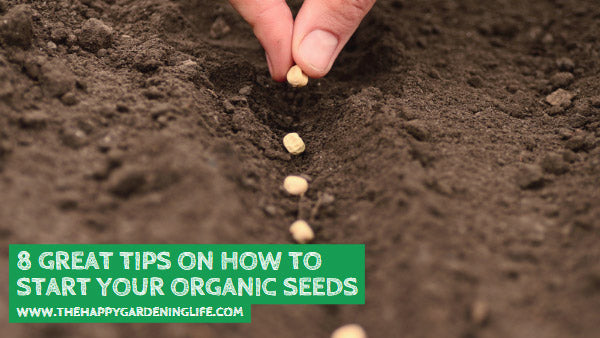
8 Great Tips on How to Start Your Organic Seeds
Share
 Sometimes starting organic seeds may be difficult. There are cases where they don’t germinate when they should have already—and other times, they don’t even sprout at all. These are some of the common problems that home gardeners have to deal with.
Sometimes starting organic seeds may be difficult. There are cases where they don’t germinate when they should have already—and other times, they don’t even sprout at all. These are some of the common problems that home gardeners have to deal with.
Now, there are several factors to unsuccessful germination: it could be that the sprouting conditions are not ideal, the sunlight or lighting source is not sufficient, the soil mixture used is incompatible with the seeds, or the seeds themselves are not of good quality.
So if you want to succeed in germinating your organic seeds this year, be sure to follow these 8 great tips from A Way to Garden. They will help you get the best sprouting results you’ll ever have.
Like this blog post? Please share it on Facebook, Twitter and Pinterest today!
8 Great Tips on How to Start Your Organic Seeds
1. Don’t be in a rush. Get your timing right for each crop.
2. Don’t be cheap; buy fresh seed if there’s any doubt. Check on average viability (in years) of a given type of leftover seed, but also ask yourself how well you really cared for it. Seed is alive (but not if you left it in the hot, humid garage all summer).
3. Don’t use just any old potting soil; some brands may be too coarse, especially for smaller seeds. A fresh bag of sterile medium labeled “germination mix” or “seed-starting mix” is a safer bet.
4. Cleanliness counts. When re-using flats, trays, cells, and pots, wash with a dilute bleach solution (1:10 bleach:water) or at least hot, soapy water, if you wish to skip the bleach.
5. Do pre-moisten the mix before putting in flats or cells, so it’s barely moist and no longer powdery dust. As I said: barely moist, just to take the edge off; not sodden! Trick: If working indoors, just run water from the kitchen-sink sprayer into the bag; massage and turn the bag to distribute; then repeat a few times.
6. Do use bottom heat, from a germinating mat, and a dome lid or plastic wrap to create a “germination chamber” of around 70F.
7. Don’t rush to transplant, especially with warm-season crops like tomatoes, peppers, eggplants. Nothing is gained by making them shiver before the weather really settles, and much can be lost in the wildest spring weather.
8. Do plan for succession sowings of many crops, sowing only a short row every couple of weeks and avoiding 40 servings of lettuce or 10 pounds of green beans in a single day’s harvest. Take advantage of both cool ends of the season to repeat sowing certain crops, such as peas.
Article Source: awaytogarden.com
